Generally, a imperial ruler usually has four sets of graduations, one on each edge of each side. The longest lines represent the inch marks.
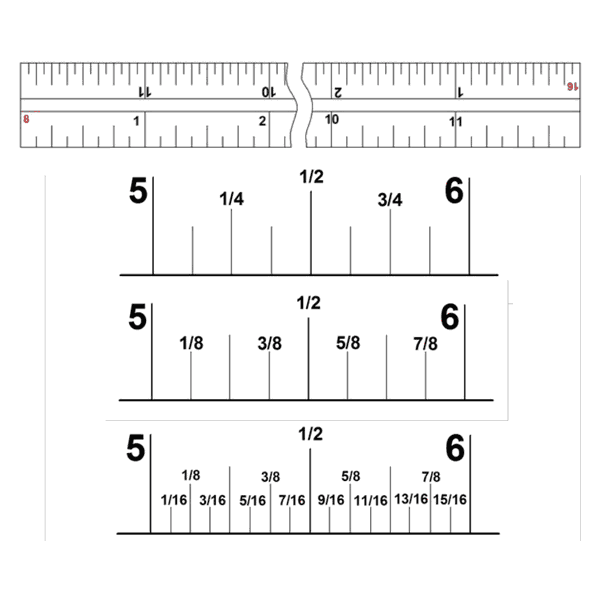
On one edge each inch is divided into 8 equal spaces so each space represents 1/8 in. The other edge of this side is divided in sixteenths. The 1/4-in. And 1/2-in. marks are commonly made longer than the smaller division marks to facilitate counting, but the graduations are usually not numbered individually, as they are sufficiently far apart to be counted without difficulty. The opposite side is similarly divided into 32 and 64 spaces per inch, and it is common practice to number every fourth division for easier reading.

Look at the ruler scale above. There is a small numeral marked on the end of the ruler (red numbers). This numeral indicates the number of divisions per inch. When referring to fractions, always use the reduced name.
Look at the section between the “5” and the “6” on the edge marked with an “8” for eighths. There are eight equally spaced lines. The lengths of these lines differ and indicate different fractions or parts of an inch.
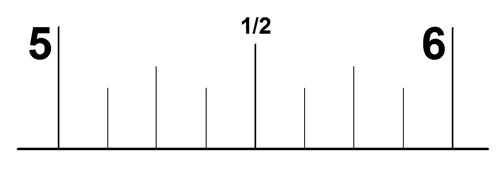
Each half inch is divided in half by a slightly shorter line indicating 1/4 on the left and 3/4 on the right.
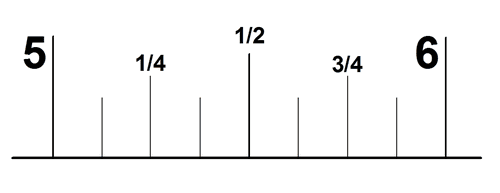
Each 1/4 inch is divided in half by the shortest line which indicates 1/8 inch.
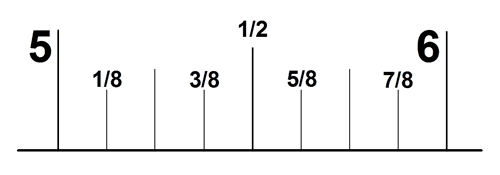
Now turn the ruler and look at the edge with a 16 marked on it.
There are now 16 equal divisions between each inch. Common tapes and rules usually are not graduated smaller than sixteenths. However, precision measurements require smaller graduations.
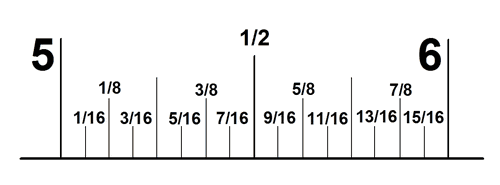
Look at the back of the ruler. Find the edge marked 32 and once again look between the numbers “5” and “6”.

To read 5-5/8 inches on the scale, first find the five inch mark, then determine the number of 32nds in 5/8.
If 1/8 = 4/32, then 5/8 = 20/32
(4 x 5 = 20)

- Find the 20/32 reading on the scale as shown above.
- Write the new fraction 5-20/32 inches.